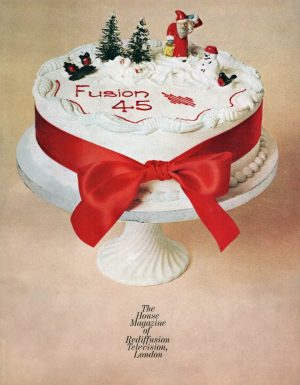Ready, Steady, Goes
Celebrating the life of Ready, Steady, Go! as it finishes at the end of 1966

The last ‘Ready, Steady, Go!’ is transmitted on December 23 when it will have run non-stop, apart from Good Friday, 1964 for 175 shows. The first programme was screened in August, 1963. Here francis hitching, who has worked on it throughout, sums up.

The phenomenon about those early days of Ready, Steady, Go!, was not the teenagers who enjoyed it, but the adults. They, used to write and telephone in their hundreds: protesting, inquiring, congratulating. If there was one word to describe their reaction, it was bafflement. They simply couldn’t believe their eyes.

RSG! quickly became half a musical programme, half a weekly documentary. It was the first pop programme to show teenagers as they really were, acne and all. The reason for its early runaway success (one week it had a rating in the sixties, easily a record for the slot) was that it happened at a time when teenagers were more curious, more inventive, more interesting, more clanish, and more independent than ever before. Their clothes, their dancing and their music all showed this. And the outside world looked on bewildered, as explorers at a complex initiation/fertility rite.
Pre-RSG! was pre-jerk, pre-Rolling Stones, and pre-Carnaby Street. I remember the first night I went out hunting for audience dancers, going into a club and realising with a shock that they weren’t doing the twist. The Rolling Stones I knew about already – I had been at the Richmond Jazz Festival earlier in the year when a handful of people watched the supposed main attraction, Acker Bilk, while simultaneously police and officials tried desperately to control an audience of thousands crammed into the Stones marquee. The new fashions were there for anybody to see – provided they looked at teenagers, not film stars.
These three elements became the mixture which exploded every Friday evening, forcing themselves into national thinking. In its early stages, the teenage attitude represented a genuine popular folk movement, confined not by class but by age. At its best, it was a rejection of commercialism and paternalism; even at its worst it had the flavour of home-made bread.
The criticisms made at the time by adults now sound absurd. ‘It isn’t music’. ‘All that long, dirty hair’. ‘They don’t even dance together’. ‘I can’t tell one song from another’. ‘I wouldn’t let my daughter marry one’. In most cases, the opposite of the criticisms was the truth.
For the first time this century Britain had popular music of its own – derived, it is true, from urban American blues, but still incomparably better than the sentimental product of Denmark Street (remember Where Will The Baby’s Dimple Be?). While the standard of musicianship was lower than that of the best session players, at it was it was themselves who were playing. As for the hair, criticism would have been better directed against dandyism than dirt. And does anybody still seriously suggest that the traditional lot are as expressive as Sandie Serjeant?
More disciplined, yes; more creative, no. It was probably this aspect that most riled adults – that teenagers could happily and successfully get along without the authority of anyone older. Elkan Allan, who as executive producer devised and master-minded the programme, enthusiastically endorsed this. Apart from myself, who was regarded as somewhere between an elderly brother and a youngish uncle, everybody on the production team had to be more or less in their teens. What’s more they had to work as a team and keep control of the programme’s content. What matter if Cathy McGowan fluffed her lines: to a teenager she was was one of Us, not Them. Meanwhile Vicki Wickham, who started on the programme as my secretary and became the editor, gradually developed into a kind of conscience for the pop world. Earlier than anyone, she identified the coloured source of the best of current pop, and held this up as the example which every record producer had to match.
Stories of the Beatles’ retirement were published the same week as the announcement of the end of Ready, Steady, Go! The coincidence should signify something. The end of an era, perhaps. More likely, it’s just that the novelty has worn off. Teenagers don’t dance, dress or sing less interestingly than they did in 1963. But the adults have joined the game.
About the author
Francis Hitching was editor of Musical Programmes at Rediffusion







Had it not been for the fact that the American networks were rapidly converting from black-and-white to colour broadcasting in the mid 1960’s, or if ITV had begun colour broadcasting by 1964, “Ready, Steady, Go!” likely would have been exported to the United States.
Given that it originated in London at the height of the “British Music Invasion”, I think “RSG” would have been successful in America as well.